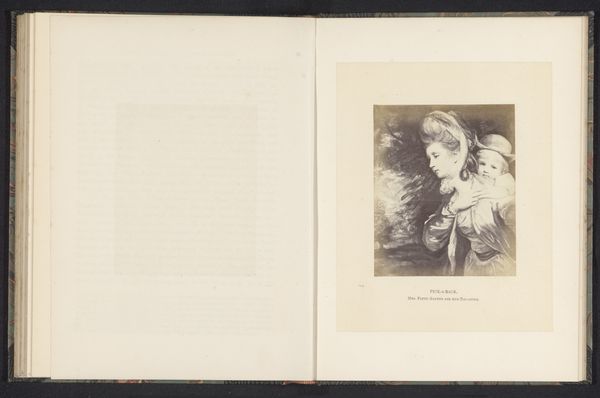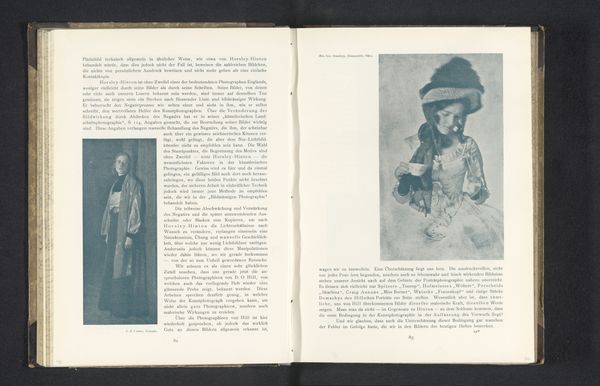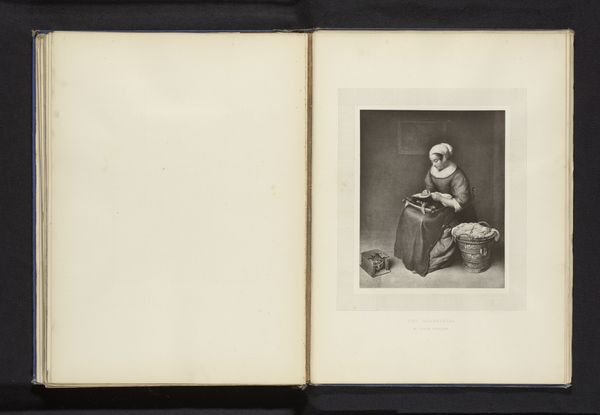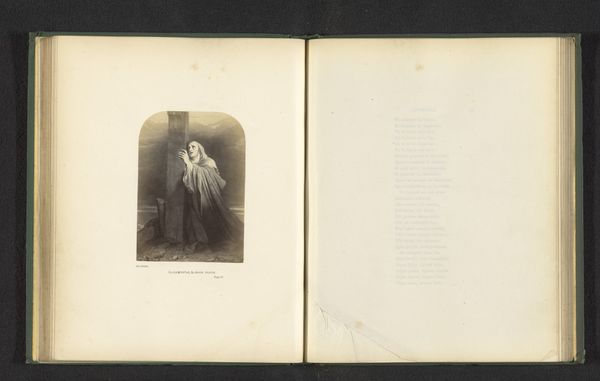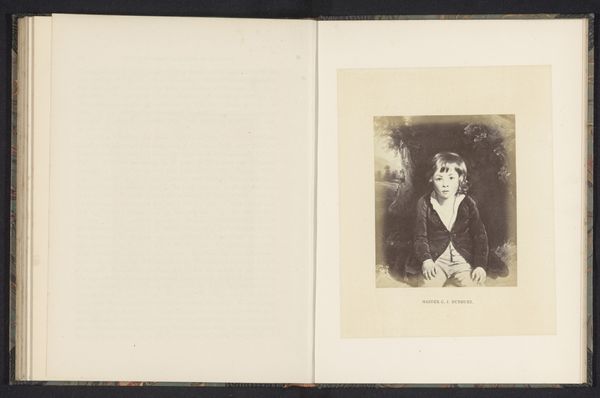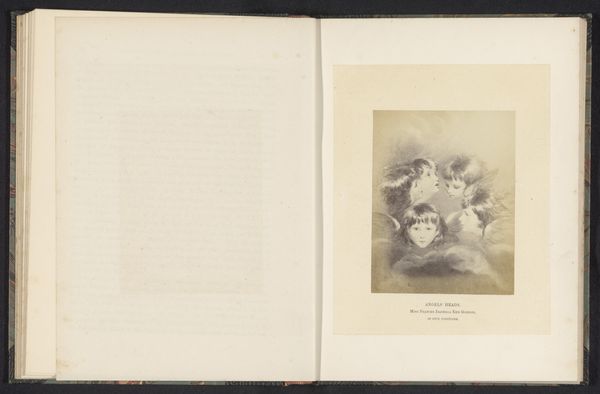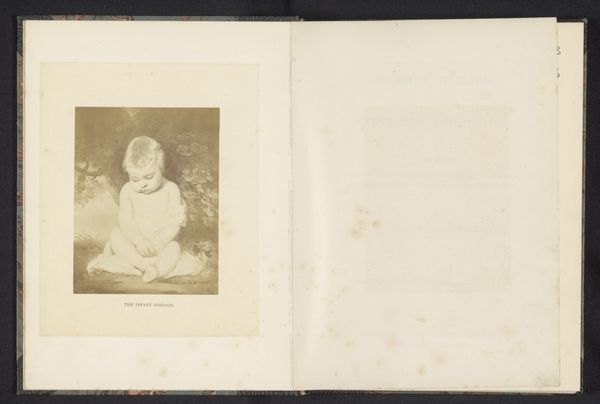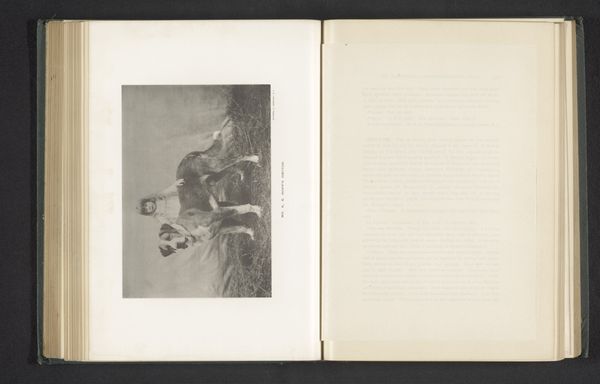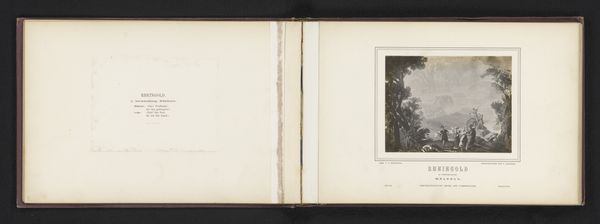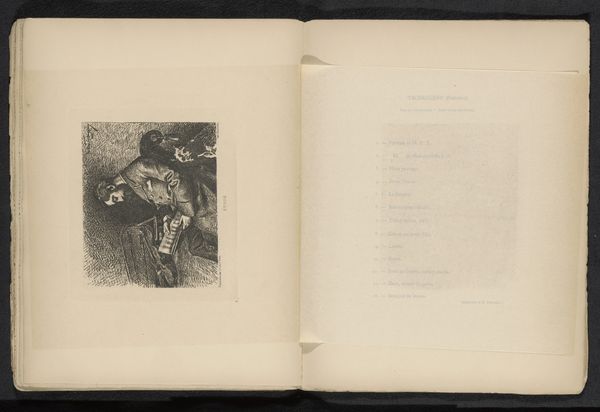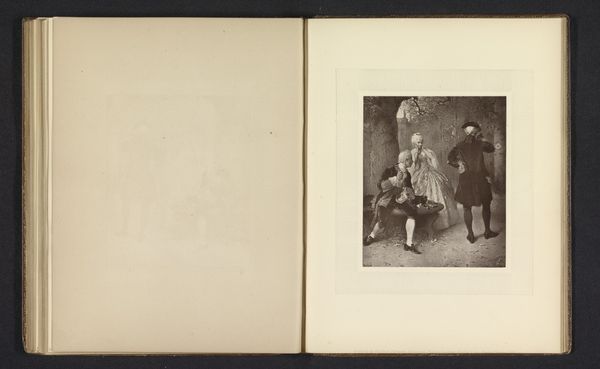
Fotoreproductie van een portret van John Crewe als kind door Joshua Reynolds before 1867
0:00
0:00
print, photography
#
portrait
#
ink paper printed
# print
#
photography
#
history-painting
Dimensions: height 130 mm, width 101 mm
Copyright: Rijks Museum: Open Domain
Curator: Here we have a photographic reproduction of Joshua Reynolds’s portrait of John Crewe as a child. This particular print is dated before 1867. Editor: It strikes me immediately as very posed, almost theatrical. There's a formality that feels… manufactured. Is this simply a photograph of a painting, then? Curator: Yes, that’s correct. It is an early photographic print of an earlier painting. You notice the layers of remove from the "original" moment, from the sitter as a child? The Crewe portrait became iconic in its time. We see here how it became disseminated and further ingrained within the visual culture of the era via reproductive technologies. Editor: Exactly, which brings to mind the process of image production. What's intriguing is the double translation here. Reynolds, the painter, captured the boy. But then we have the anonymous photographer and printers reinterpreting Reynolds’s brushstrokes through photography, ink and paper. It’s about more than the image; it’s about how easily art could be replicated and consumed on a mass scale. Curator: Indeed. And think about what Reynolds, as a society portraitist, was trying to convey about Crewe's family. Reynolds was incredibly skilled in using visual cues to reinforce ideals of gentility and refinement. So, how are these societal markers carried over and potentially transformed or flattened through reproduction? The dogs, for example, what statement are they making, reproduced in monochrome, without their original texture and color? Editor: And those clothes! So much heavy fabric, carefully replicated folds of what appear to be expensive textiles. The labor involved in creating those garments would be considerable, even before the act of immortalization through painting and then print. It speaks to privilege on so many levels. How does access to this image, in its reproduced form, affect our understanding of that privilege? Does it democratize art, or simply highlight the inequalities in visibility? Curator: It underscores a sense of manufactured historical narrative, wouldn't you agree? The layered process amplifies a very particular perspective that then permeates cultural memory, shaping how subsequent generations understand concepts of beauty, class, childhood, etc. Editor: Absolutely. I see how the work’s meaning is not only contained within the original brushstrokes, but also accumulates meaning with each layer of reinterpretation. It really challenges us to think about not just what we see, but how it gets to us. Curator: A wonderful note to conclude our reflection upon it, I think. Editor: Agreed.
Comments
No comments
Be the first to comment and join the conversation on the ultimate creative platform.
